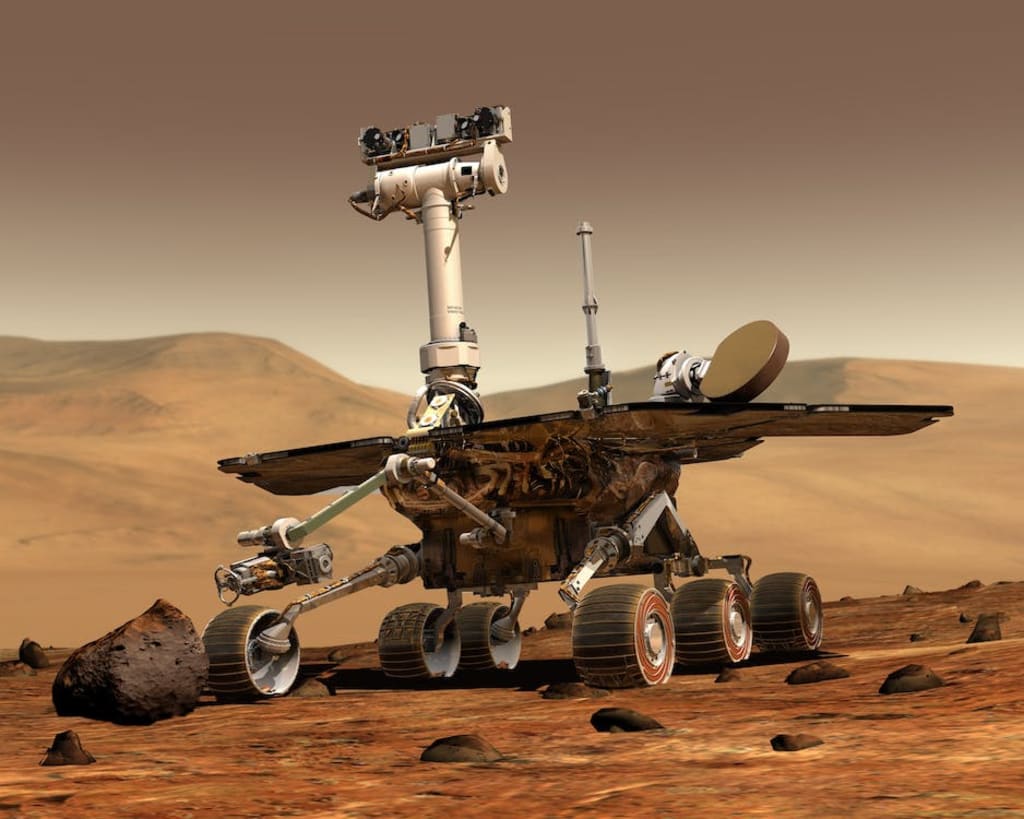Unraveling the Engineering Marvel Behind the Functioning of the Mars Rover.
Roving the Red Planet:

The Mars Rover, sometimes referred to as the Mars Science Laboratory (MSL), is an autonomous spacecraft that NASA uses to explore the surface of Mars. On November 26, 2011, it was launched, and on August 6, 2012, it touched down in the Gale Crater on Mars. Since then, the rover has been investigating the Martian surface and reporting data back to Earth.
The Mars Rover is a cutting-edge technological marvel built to function in Mars’ hostile environment. The car measures 10 feet in length, 9 feet in width, and 7 feet in height. It weighs 2000 pounds. Its aluminium wheels are built to climb over rocks and other obstructions. The rover can turn in position or maneuver across small places because to the ability of the wheels to rotate independently.
A radioisotope thermoelectric generator (RTG) powers the rover. The heat created by the radioactive isotopes’ decay is used in this generator to produce power. Due to the thin atmosphere and protracted dust storms on Mars, solar power is unreliable and must be provided by another source.
The rover is equipped with a number of scientific tools that let it explore the Martian surface and gather data. These tools consist of:
A camera system with two lenses, one for wide-angle photos and one for telephoto photos, is called a mast camera (Mastcam). Scientists can examine the geology of Mars thanks to the high-resolution, colour photographs captured by the Mastcam.
2. Mars Hand Lens Imager (MAHLI): A camera installed on the robotic arm’s tip that can capture incredibly fine-grained pictures of the ground and rocks. Other equipment on the rover can also be captured in close-up with this camera.
3. Alpha Particle X-Ray Spectrometer (APXS): This tool measures the energies of alpha particles and X-rays to study the chemical makeup of rocks and soil. This tool aids researchers in determining whether the environment was ever favorable for microbial life.
4. Chemistry and Mineralogy (CheMin): A tool that examines the soil’s and rocks’ crystal structures. Scientists can learn more about the history and formation of Mars by examining the minerals that are found there.
5. Sample Analysis at Mars (SAM): A group of instruments that examines samples of soil and rocks as well as the gases present in the Martian atmosphere. This device can find organic substances, which are molecules made of carbon and hydrogen. By doing so, it can tell researchers whether life has ever existed on Mars.
6. Radiation Assessment Detector (RAD): A tool for calculating radiation levels on Mars’ surface. This tool aids scientists in comprehending the dangers faced by human explorers and the viability of life in the present environment.
The mars Rover is more than just a spacecraft that travels across Mars’ surface. A number of scientific instruments, a communications system, and a navigation system are all parts of this intricate system. A group of engineers and scientists on Earth operate the rover by sending commands to it via the Deep Space Network (DSN), a global network of radio antennae.
The Mars Rover is an amazing technological advancement that has fundamentally changed how we think about Mars and its potential to harbor life. The rover is continuing to explore the Martian surface and transmit data to us in order to better understand our neighbouring planet thanks to its cutting-edge scientific equipment and robust architecture.
Fun Fact:
The Chinese Tianwen-1 rover and the NASA Perseverance rover, both of which touched down on Mars in 2021, were the most recent Mars rover missions. The Sample Caching System, one of the sophisticated scientific tools installed on the Perseverance rover, intends to gather samples of Martian rocks and regolith for later return to Earth. Additionally, the rover has been doing experiments and investigating the Jezero Crater to learn more about Mars' geology, temperature, and possibilities for past microbial life. However, additional updates would be necessary past September 2021 if these rovers made any specific findings or discoveries after my knowledge cut-off.
About the Creator
Enjoyed the story? Support the Creator.
Subscribe for free to receive all their stories in your feed. You could also pledge your support or give them a one-off tip, letting them know you appreciate their work.






Comments
There are no comments for this story
Be the first to respond and start the conversation.